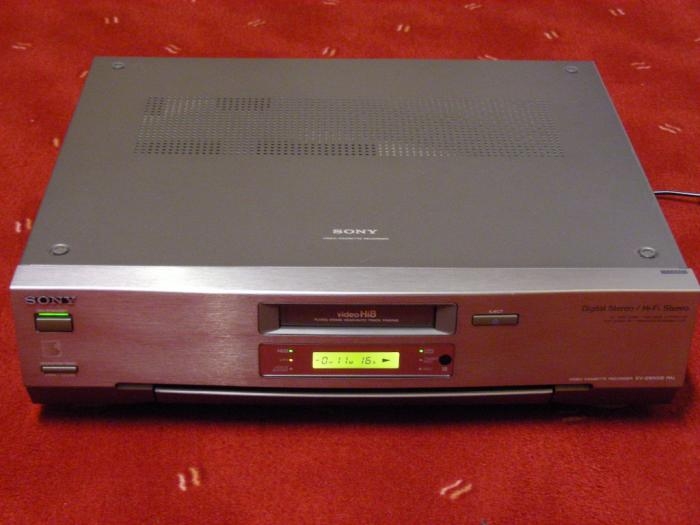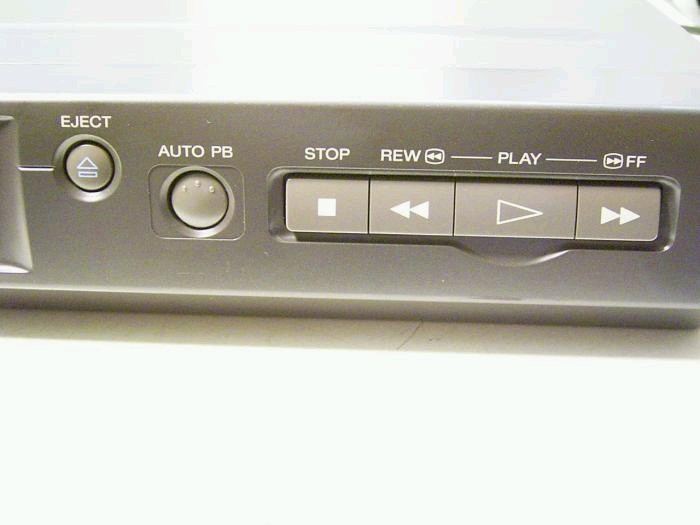Hi8 player
To counter the introduction of the Super-VHS format, Sony introduced Video Hi8 (short for high-band Video8). Like S-VHS, Hi8 used improved recorder electronics and media formulation to increase the recorded bandwidth of the luminance signal. Both Hi8 and S-VHS were officially rated at a luminance resolution of 400 horizontal TV/lines[2] (560×480 in today's digital terms), a vast improvement from their respective base formats of 240 lines and roughly equal to laserdisc quality. Chroma resolution for both remained unchanged, at approximately 30 lines horizontal.
Both S-VHS and Hi8 retained the audio recording systems of their base formats; VHS HiFi Stereo outperformed Video8/Hi8 AFM, but remained restricted to high-end machines. In the late 1980s, digital (PCM) audio was introduced into some higher grade models of Hi8 (but never S-VHS) recorders. Hi8 PCM audio operated at a sampling rate of 32 kHz with 8-bit samples—higher fidelity than the monaural linear dubbing offered by VHS/S-VHS, but vastly inferior to VHS HiFi. PCM-capable Hi8 recorders could simultaneously record PCM stereo in addition to the legacy (analog AFM) stereo audio tracks.
The final upgrade to the Video8 format came in 1998, when Sony introduced XR capability (extended resolution). Video8-XR and Hi8-XR offered a modest 10% improvement in luminance detail. XR equipment replays non-XR recordings well, and XR recordings are fully playable on non-XR equipment, though without the benefits of XR.
















No comments:
Post a Comment